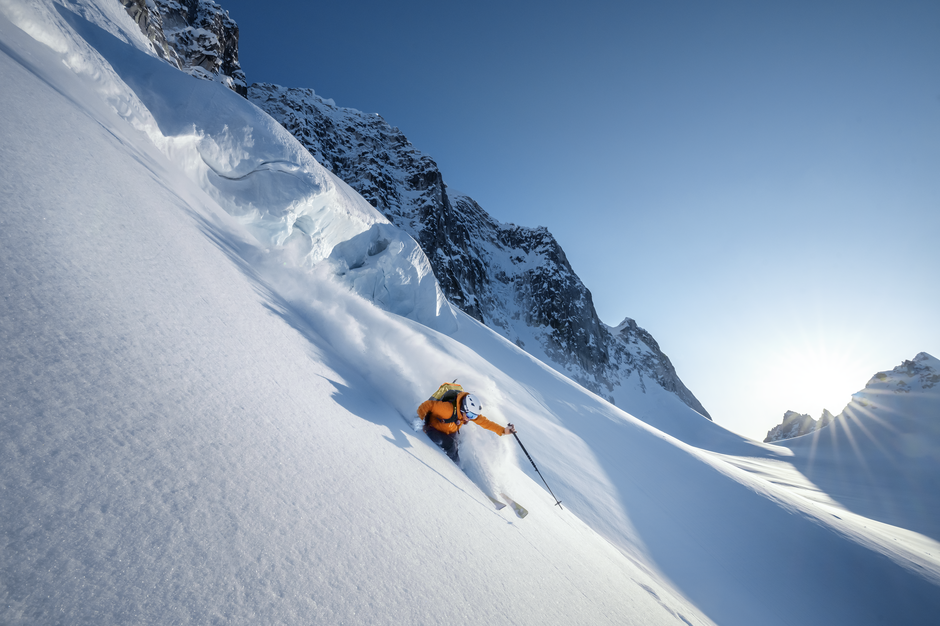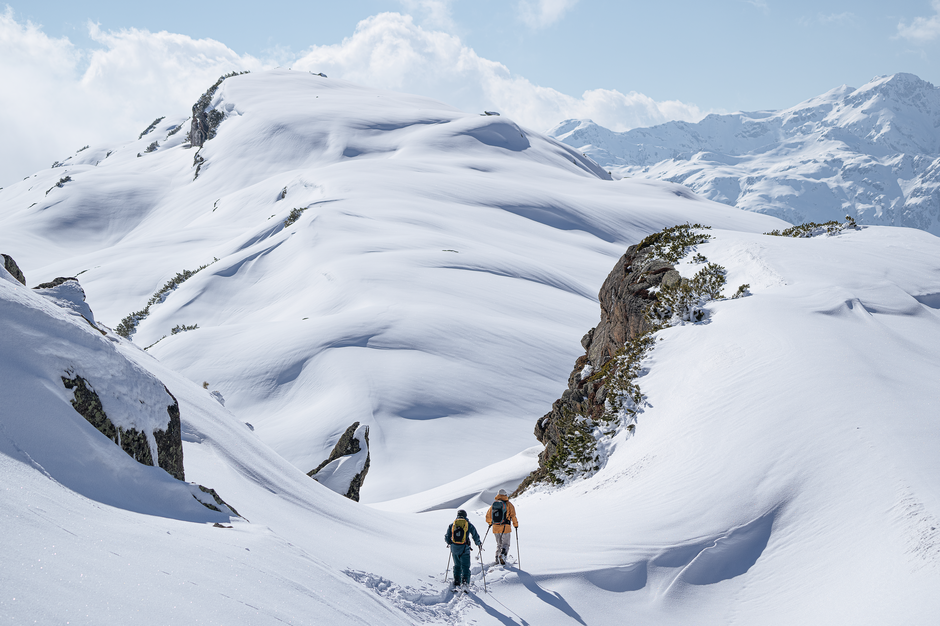How climate change is affecting snow and avalanche conditions.

How climate change is affecting snow and avalanche conditions.
Landslides, melting glaciers, rockfall, ice avalanches – climate change is leading to an increase in objective dangers and making some high-alpine routes impassable. Melting permafrost is also making rockfaces more unstable and extreme weather is causing considerable damage to trail networks. The climate crisis has hit the mountains – so what will the coming winters bring? How will snow and avalanche conditions be affected?
In the following interview, Dr. Benjamin Reuter, mountain guide and snow & avalanche researcher at Météo France, gives us an insight into his findings.

What exactly is a snow researcher Ben?
My job is generally about how to better predict and avert avalanches in the future. This involves using modeling and super-fast computers and is based on a thorough understanding of snow conditions. In a recent study, we analyzed sets of data on the snow mass in the French Alps over the last 60 years and made projections for the next 100 years. The past may not be as exciting as the future, but if we want to understand whether or not there will be more avalanches or pow days for skiing in the future, then we must look at the past.
And? Will we still be able to go ski touring in the Alps despite climate change?
Yes. We will be able to go ski touring. But we’ll probably have to carry our skis for the first hour of the ascent or so. I’m afraid that current trends indicate there will be less snow at lower altitudes. Over the last decades, air temperatures have risen according to mountain meteorological stations in the Alps, resulting in it raining more often than snowing during the winter months – at lower elevations in particular. Above around 1,400 meters, the northern Alps are experiencing more snowfall than rain in winter. How much snow stays on the ground, however, is more dependent on the kind of precipitation than on air temperatures. Should this trend continue, the altitude at which permanent snow cover is likely to exist during the winter months will rise to about 2,000 m in the course of the next 30 years.

Rising temperatures and more precipitation. Is that the result of climate change in the Alps?
As far as average air temperature is concerned, the increase has been clearly discernible since the 1990s. In addition, the rate of increase is getting steeper. It is a widely cited climate trend. When it comes to precipitation, it very much depends on the region you are studying. The Alps are a relatively small range of mountains with varying climatic conditions. From simulations for the coming years, scientists predict that it will be drier in the southern Alps and wetter in the northern Alps.
Does climate change also affect avalanches?
Avalanches are a natural hazard in the mountains. They occur infrequently and are largely dictated by the weather. You could say: “Avalanches don't care about the climate; they care about the weather.” This is a common quote you hear these days. Whether or not there are avalanches in a certain region depends on the prevailing weather conditions i.e., local weather patterns. Precipitation, wind, and temperature are the most important factors, because these meteorological variables can directly change the properties of the snowpack. The cumulative effect of these weather conditions shapes the snowpack over a period of weeks, resulting in a series of different snow layers. The characteristics of these layers are ultimately decisive in determining whether further snowfall, higher temperatures, or even a skier/ boarder, will trigger an avalanche. Whether our behavior in the mountains is changing is difficult to judge, but climate change is having an impact on the frequency of both heavy snowfall and warm spells. And so, there is a link between climate and avalanches, even if the word ‘climate’ can refer to several decades, and ‘avalanches’ are a short-lived phenomenon.

So what exactly does this mean in terms of avalanche risk?
The best way to describe avalanche risk is by looking at avalanche conditions. Typical conditions, such as new snow, drifting snow, old snow, or wet snow occur to a greater or lesser extent depending on which climatic region you are in. Or perhaps we should say they used to? Because for the past 30 years, these climatic regions have slowly been shifting. Old snow conditions, for instance, in central Alpines regions such as down the Ötztal Valley, Austria, or in Valais or Graubünden, Switzerland, have not increased over the past 60 years. On the northern fringes of the Alps however, old snow issues are declining, because these areas are now more prone to rain. There is a very clear shift in wet snow timing, however. Over the last 20 years, the start of the wet snow season has arrived up to two weeks earlier in the central Alps.
What kind of problems will we have to contend with in future then?
At lower elevations, higher temperatures will mean less snow. There will therefore be fewer big avalanches here, which previously reached the base of the valley sometimes. Fresh snow avalanche conditions will keep occurring, and extreme events might happen more frequently, especially at higher elevations with a somewhat warmer atmosphere.
At higher elevations, the depth of the snowpack and the amounts of new snow have not changed significantly over the years. Extreme weather events such as heavy precipitation may become more frequent in the coming years, leading to an increase in fresh snow avalanche conditions in some regions. And wet snow conditions may arise earlier in the year.

What is our best course of action going forward?
We are increasingly aware that conditions in the mountains are changing. Climate may not affect tomorrow's avalanche risk, but it can change the patterns that have previously been observed in terms of timing and location. A certain amount of adaptability is going to be required in future, to be able to predict changing situations effectively. For ski touring, following avalanche and weather forecasts is the name of the game. And maybe it’s worth getting a ski attachment system on your mountain bike, so you can ride up the lower sections of ski touring routes.